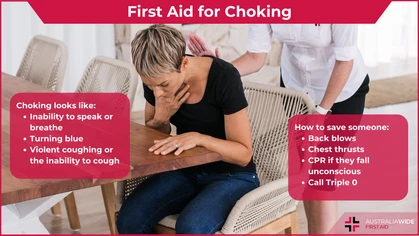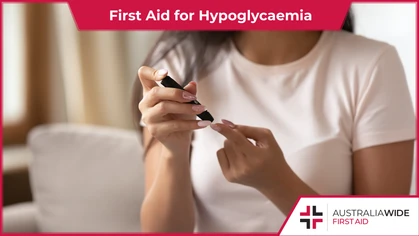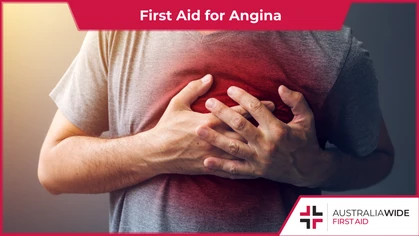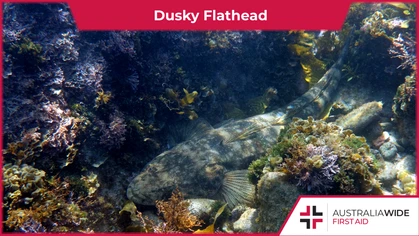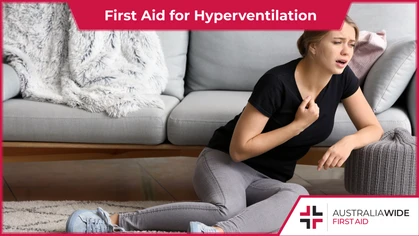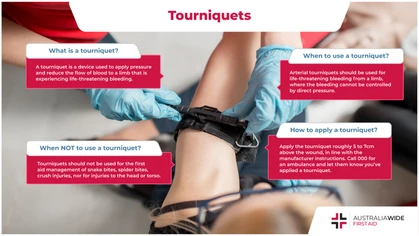First Aid for Febrile Convulsions

How-To

A febrile convulsion is a seizure that can occur when a child experiences a fever. It is not possible to predict or stop febrile convulsions. However, it is important to know first aid for febrile convulsions, so that you can reduce your child’s discomfort.
A febrile convulsion is a fit or seizure that can occur when a child experiences a fever, and their body temperature exceeds 38 degrees Celsius. Febrile convulsions typically occur in children aged 6 months to 6 years, and they generally only last for a few minutes. Though they are unlikely to cause long-term damage, it is important to know first aid for febrile convulsions, so that you can reduce your child’s discomfort.What Causes Febrile Convulsions?
Febrile convulsions typically occur when a child experiences a rise in body temperature due to a viral illness or bacterial infection. A spike in body temperature can disrupt the functioning of neurons within the brain, thereby leading to involuntary muscle contractions and sudden, irregular movements of the body. Children are more susceptible to febrile convulsions compared to adults, as their growing brains are more sensitive to fever.Signs and Symptoms of Febrile Convulsions
If your child is exhibiting the following signs and symptoms, they may be experiencing a febrile convulsion:- Flushed, hot skin
- Disorientation or loss of consciousness
- Twitching or jerking of the arms and legs
- Difficulty breathing
- Foaming at the mouth
- Going pale or bluish in skin colour
- Eyes 'roll back'
First Aid for Febrile Convulsions
It is important to remember, febrile convulsions are common among children, and they typically only result in a short period of drowsiness, rather than any long-term damage. It is impossible to predict when a child will experience a febrile convulsion, and you cannot stop a febrile convulsion once it has started. Instead, you should focus on ensuring that your child does not injure themselves while convulsing, using the following steps:- Stay calm and remain with the child
- Protect them from harm by moving any objects and/or bystanders out of the way
- Protect their head from any impacts
- If they have tight clothing on, loosen it. If possible, also remove or open their clothing from the waist up
- Note the start time and duration of the convulsion
What NOT to do During a Febrile Convulsion
- Do not put anything in the child’s mouth
- Do not restrain the child
- Do not put the child into a bath or shower/li>
- Do not give the child anything to eat or drink
Post-Care for Febrile Convulsions
- While they are drowsy, roll the child into the recovery position
- Place cool washcloths on their neck and forehead
- Use tepid water to sponge the rest of their body
- Contact Triple Zero (000) if the convulsion lasted more than 5 minutes, the child has an additional convulsion in a short period of time, the child does not wake up, or they have been injured during the convulsion and appear quite ill
- Contact your local family doctor if the convulsion lasted less than 5 minutes, or if the child had a previous illness before the convulsion
Recommended First Aid Courses
The following first aid courses look at febrile convulsions:Sources
- "Fever - febrile convulsions", Better Health Channel, https://www.betterhealth.vic.gov.au/health/conditionsandtreatments/fever-febrile-convulsions
- "Queensland Paediatric Fact sheet - Febrile convulsion", Children's Health Queensland Hospital and Health Service, https://www.childrens.health.qld.gov.au/fact-sheet-febrile-convulsions/
Originally published at
https://www.australiawidefirstaid.com.au/resources/first-aid-for-febrile-convulsions
as part of the Australia Wide First Aid Articles Library
